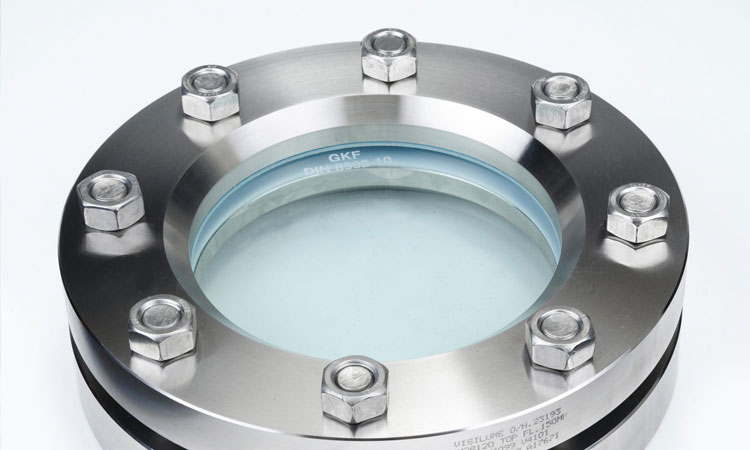Sight Glasses

Specification of Sight Glasses
| Size | 50NB — 600NB |
|---|---|
| Material | M.S. / SS 304 / SS 316 |
| Pressure | 150PS1 |
| Temperature | 0 Deg C - 1200 Deg C. |
| Body , Chest | Solid One piece casting of Cast Iron Fg 260, Cast Steel Gr WCB ,CF8,CF8M. |
| Seat | Integral to Body, Soft, Optional. |
| Gate | AISI SS 304,316,316L,317,317L |
| Screw Spindle | AISI SS 410,304,316. |
| Nut | Brass |
| Yoke | Plate type of MS . |
| Gland Follower | Cast Iron , Cast steel , Ductile Iron ,CF8,CF8M. |
| Hand Wheel | Cast Iron , Cast steel , Ductile Iron |
| Gland Packing | PTFE , PTFE Impregnated |
| Ends | Flanged ends |
| Port | STANDARD [Round], Optional V Port, Diamond Port,. |
Sight Glasses Sizes
| Size range | 15 MM to 150 MM |
Sight Glasses Maximum pressure ratings
| pressure | 150 class |
Advantages Of Sight Glasses
- Unlike many types of glass, are generally shatter-proof. This is an important feature, as toughness is a critical safety issue. Indeed, some processors or manufacturers will not allow glass or other shatter-prone materials in their process lines due to a concern for the safety of their workers or customers.
- sight glasses are chemically resistant to the acids, alkalis, and alcohols commonly found in many food and beverage processing applications in particular.
- Depending on how they’re made, sight glasses may be very robust alternatives to glass. Some manufacturers offer plastic sight glass windows formed by injecting the polymer into a precisely formed metal support ring, resulting in an extremely strong final product.
- Compared to glass sight glasses, sight glasses or viewports are also relatively inexpensive to make. As a result, they often find their way into low-end uses such as fluid level indicators.
- Unlike glass viewports, viewports or sight glasses may be formed into several different types of shapes. The sight glass window may be domed for easier viewing of the contents inside the pipe or tank, or the plastic sight glass may be cast as a one-piece transparent unit to be threaded into a process pipe or tank for use as a viewing port. See the examples below.
Disadvantages Of Sight Glasses
- Compared to glass, sight glasses have a more restricted operating range. Even high-grade plastic composites will melt at higher operating temperatures, so these types of sight glasses are only suited for use in lower-temperatures applications below 300°F.
- Relative to glass versions, sight glasses are more prone to abrasive damage, scaling, and other surface inclusions that over time may affect the transparency and functionality of the sight glass.
